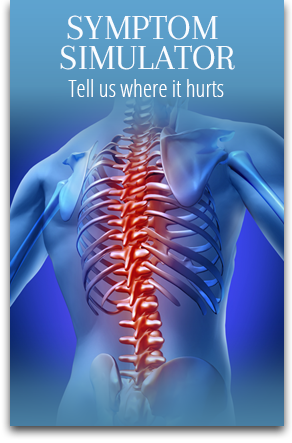Stretching in Madison, OH
Stretching improves flexibility and enhances the body’s ability to protect itself from injury. Stretching also helps improve posture so that joints and vertebrae remain properly aligned. The chiropractors of French Chiropractic and Wellness Center in Madison educate the residents of Painesville, Mentor and surrounding communities in Ohio on beneficial and appropriate stretching techniques.
How Stretching Can Help You Eliminate Your Pain
When you visit a chiropractor, your treatment will include advice on various types of stretching exercises. Stretching helps to relax muscles and joints. It also helps you stay mobile and improves your overall well-being.
The great thing about stretching is that you can do it at anytime, anywhere, and it does not require any equipment or cost money. Stretching can play an important role in pain reduction and increasing your mobility. However, if you do it incorrectly or engage in the wrong exercises for your type of injury, you may worsen the situation.
Please keep reading to find out how stretching can help you relieve your pain.
The Benefits of Stretching
- Helps prevent injuries
- Increases circulation
- Increases range of motion
- Improves muscle elasticity
- Improve muscle endurance and strength
Some Important Things to Keep In Mind While Stretching
Here a few pointers to remember during your daily stretches.
- The notion of pain is gain is false. You should only stretch to the point where you feel minor tightness of your muscles and then hold the stretch. When you start to feel pain, ease off. If you ease off and still feel a considerable amount of pain, you should schedule an appointment with a physician.
- Hold your stretches for 20-30 seconds. You should also refrain from bouncing while stretching. Bouncing triggers a reflex in your muscle that will cause the muscles to tense up and contract, an action that is counterproductive to stretching.
- Make stretching a regular activity. To get the full benefit of stretching, you need to do it consistently. We recommend that you stretch three times a day. You don’t need to involve your entire body. You can pick an area that is problematic, places with tension, and focus on them.
Why You Should Avoid General Spinal Stretching
Just about everyone can benefit from soft tissue stretching (the muscles, tendons and ligaments that are located in the buttocks, hips and legs).
The spinal column and its tendons, muscles and ligaments are designed to move. Limitations in this movement can result in an increase in back pain.
It is important that you realize that your spine is a chain that is comprised of 24 segments (vertebrae), and each of these segments is limited in how far it can move safely. If it moves outside of its normal range, you will experience an injury and pain.
The individual vertebrae that are located in your lower back have the ability to rotate 2 to 5 degrees individually. That really isn’t a broad range of motion.
By engaging in general mobility exercises, the most flexible parts will move first, and the stiffer portion of your spine will slightly move, if it does move, before you experience pain in the flexible areas.
There is no evidence that shows that improving you general spinal movement will help reduce neck or back pain.
Chiropractic manipulation is very specific and precise. We are able to find the correct vertebrae to move to avoid placing unnecessary stress on the unstable areas.
This is why we advise patients to avoid doing general twisting or hyperextension exercises if you are experiencing issues with your back. Do the McKenzie exercises make your problems worse? You should stop doing them immediately.
Basically, if you are experiencing general back problems, don’t do general spinal stretches!
When Starting a Stretching Routine
Keep the following in mind when you begin a stretching routine as a part of your back exercise program.
- Wear comfortable clothing
- Stretching should not cause pain; do not force your body into difficult positions
- Stretch on a flat, clean surface that is large enough for you to move freely
- Move into your stretches slowly and try to avoid bouncing. Bouncing may cause torn muscles
- Hold your stretches for 20 to 30 seconds. This allows the muscles or joints to loosen
- Repeat each stretch 5 to 10 times
If you need to stretch your muscles to keep them relaxed, there is an underlying reason for that. You should take the time figure out the reason.
Neck and Shoulder Stretches
If you have neck or lower back pain, it is best to visit a chiropractor to discuss whether you should do the following shoulder, lower back and neck exercises.
Flexion Stretch—Chin to Chest
While sitting or standing, gently bend your head forwards while bringing your chin to your chest until you feel the stretch in the back of the neck.
Lateral Flexion—Ear to Shoulder
This exercise stretches the part of the neck that is located just below the ears and the tops of the shoulders. To begin, gently bend your neck to one side like you are touching your ear to the shoulder until you feel the stretch. Switch to the other side.
Back Exercise Stretches
Back tension is a very common issue for back pain patients, especially in the morning. These back exercises can help restore mobility and suppleness in the back. They also help to decrease back pain and discomfort.
Back Flexion Exercise
While lying on your back, bring both knees to your chest while simultaneously bring your head forward until you feel a comfortable stretch while you are in a balled-up position.
Knee to Chest Stretch
While lying on the back with both heels on the floor, and your knees bent, place both of your hands behind your knees and bring them to your chest.
Hips and Gluteus Stretches
The buttocks and hips (where the gluteus muscles are) provide support for your lower back. Stretching these muscle groups play a key role in maintaining the flexibility of your spine.
Hip Stretch
While standing with your feet shoulder-width apart, take half a step back with your right foot, bend your left knee and shift your weight back to your right hip. Keeping the right leg straight, bend forward a little more and reach down the right leg until you feel the stretch in the outer hip.
Piriformis Muscle Stretch
Your piriformis muscles run through the buttock and can be the cause of leg and back pain. To stretch this muscle, lie on your back and cross one leg over the other. Gently pull the other knee towards your chest. You should feel a slight stretch in the buttock area.
If you want to find out more information about how stretching can relieve pain, contact the French Wellness and Chiropractic Center.







